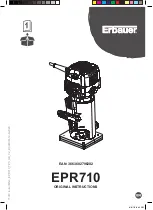
171
</save>
</rpc>
Verifying the configuration
If the client receives the following response, the save operation is successful:
<?xml version="1.0" encoding="UTF-8"?>
<rpc-reply message-id="101"
xmlns="urn:ietf:params:xml:ns:netconf:base:1.0">
<ok/>
</rpc-reply>
Filtering data
You can define a filter to filter information when you perform a get, get-bulk, get-config, or
get-bulk-config operation. Data filtering includes the following types:
•
Table-based filtering
—Filters table information.
•
Column-based filtering
—Filters information for a single column.
For table-based filtering to take effect, you must configure table-based filtering before column-based
filtering.
Table-based filtering
You can specify a match criterion for the row attribute
filter
to implement table-based filtering, for
example, IP address filtering. The namespace is
http://www.hp.com/netconf/base:1.0
. For
information about the support for table-based match, see NETCONF XML API documents.
# Copy the following text to the client to retrieve the longest data with VRF name
vpn1
, IP address
1.1.1.0
, and mask length
24
from the IPv4 routing table:
<rpc message-id="100" xmlns="urn:ietf:params:xml:ns:netconf:base:1.0"
xmlns:hp="http://www.hp.com/netconf/base:1.0">
<get>
<filter type="subtree">
<top xmlns="http://www.hp.com/netconf/data:1.0">
<Route>
<Ipv4Routes>
<RouteEntry hp:filter="vrf vpn1 IP 1.1.1.0 MaskLen 24 longer/>
</Ipv4Routes>
</Route>
</top>
</filter>
</get>
</rpc>
Column-based filtering
Column-based filtering includes full match filtering, regular expression match filtering, and
conditional match filtering. Full match filtering has the highest priority and conditional match filtering
has the lowest priority. When more than one filtering criterion is specified, the one with the highest
priority takes effect.
















































